Streamlining Admin Operations for Rug Cleaning Services
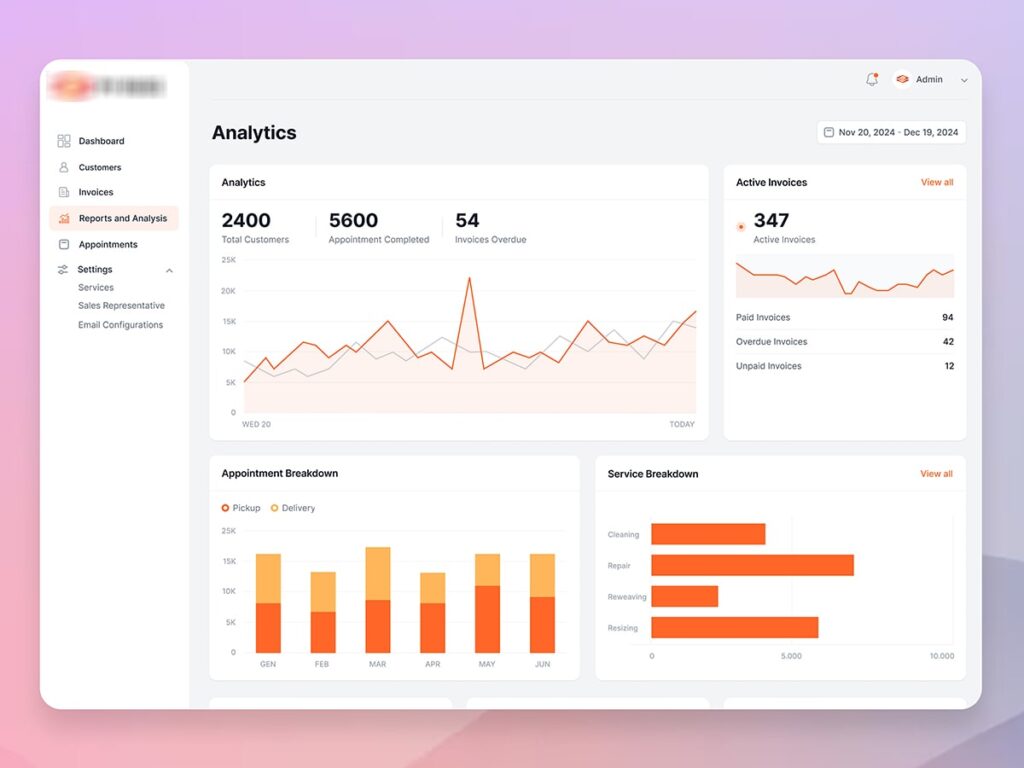
Challenges
- Manual Invoicing: Creating, tracking, and updating invoices manually led to errors and delays in payments.
- Fragmented Customer Data: Customer information, past transactions, and service details were scattered across different platforms, making it difficult for admins to get a comprehensive view of their client base.
- Inconsistent Reporting & Analysis: Without an integrated system to generate reports, admins lacked insights into their revenue, service performance, and customer behavior.
- Disorganized Appointment Scheduling: Managing appointments for rug pick-up and delivery was a challenge, leading to scheduling conflicts and missed services.
Limited Control in Settings: Managing service types, sales representatives, and email configurations lacked a centralized system, making it difficult to adjust business operations effectively.
Research & Discovery
The research phase was crucial to understanding the real pain points of the admins who manage rug cleaning operations. Through a combination of stakeholder interviews, process mapping, and competitive analysis, I uncovered several key findings.
Stakeholder Interviews (Admins): Talking to admins revealed that their primary pain point was invoice management. The process was manually driven, which led to frequent errors, delays, and confusion over payment statuses. They also expressed the need for a more organized system to manage customer details, appointments, and performance data.
Customer Insights: While the focus was on the admin interface, I also collected feedback from customers to understand their expectations. Admins needed a tool that would allow them to easily view customer history, track appointments, and communicate updates effectively.
Competitive Analysis: I examined how other service-based businesses manage similar operations. I found that the best platforms combine invoicing, customer management, appointment scheduling, and reporting into one system, minimizing manual work and reducing errors.
Centralized Data Is Crucial
Admins need a unified platform where they can access customer details, service records, and invoicing information without having to juggle multiple systems.
Automated Invoice Management
Automation in invoice creation and payment tracking could reduce errors and save time, enabling admins to focus on other tasks.
Detailed Reporting and Analytics
Admins needed access to real-time analytics and performance reports to make informed decisions about the business.
User-Friendly Settings Control
Admins wanted to have full control over service types, sales representatives, and email configurations through an easy-to-navigate settings section.
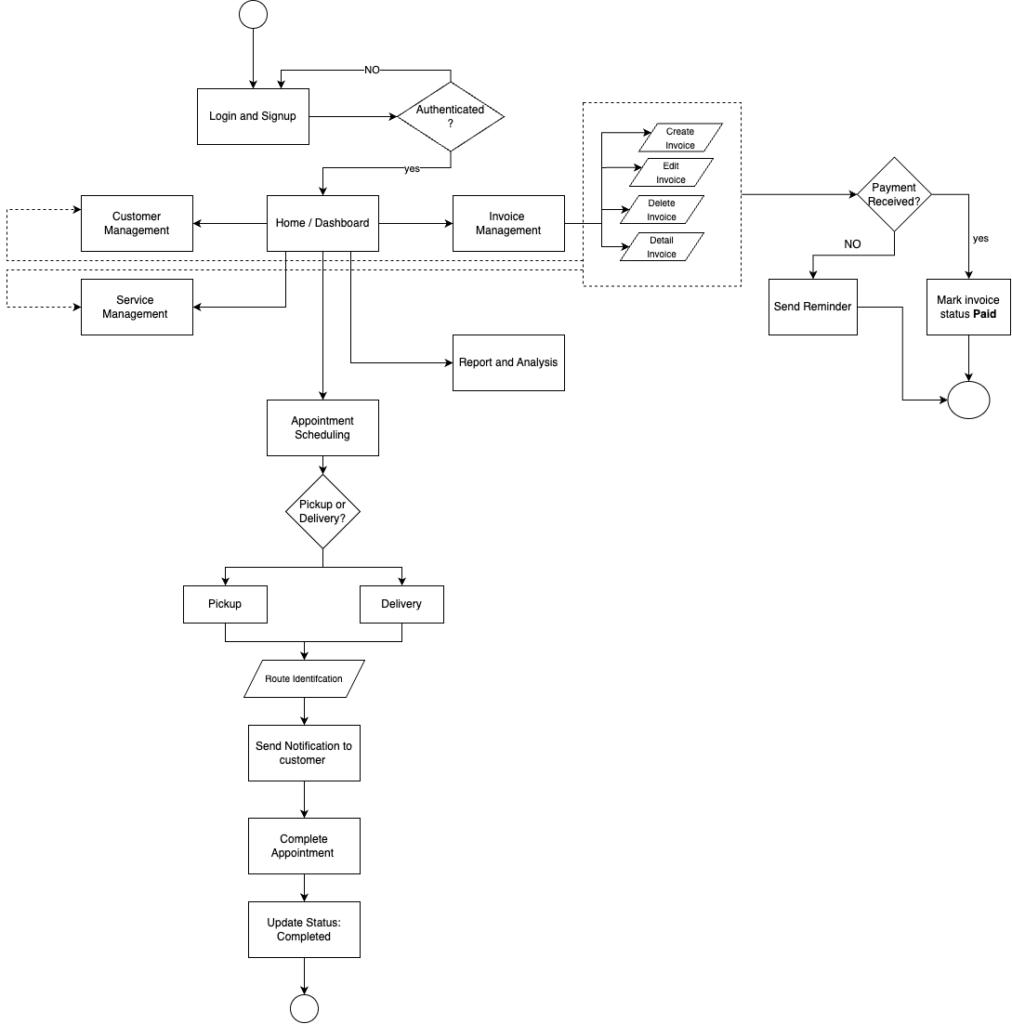
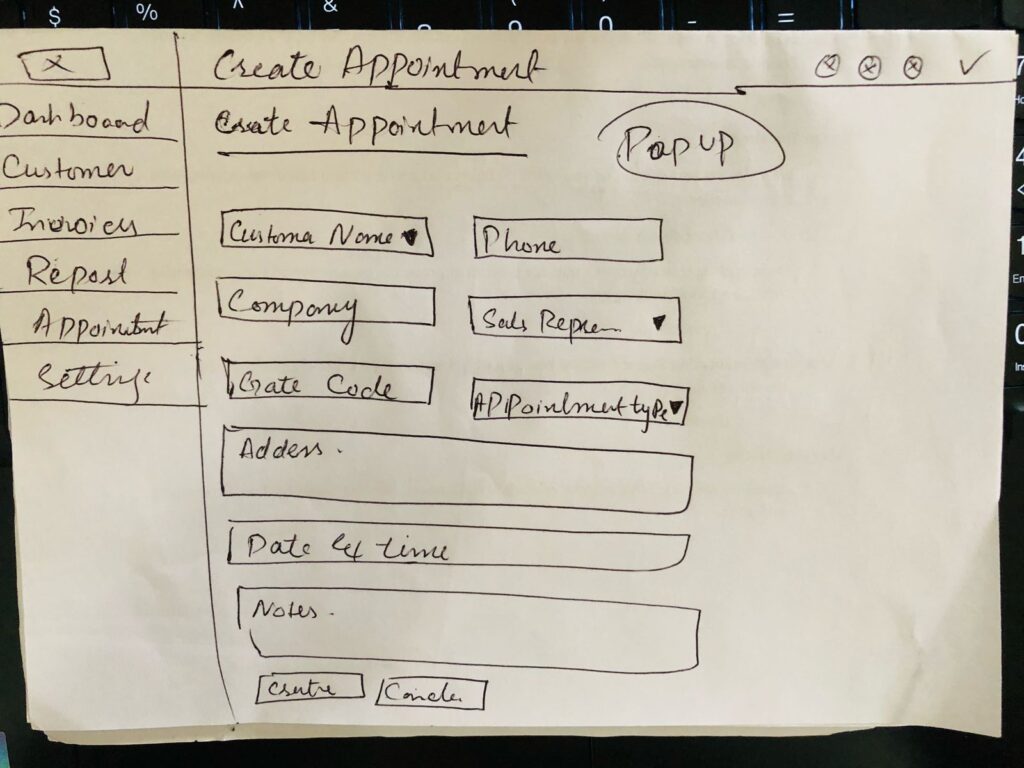
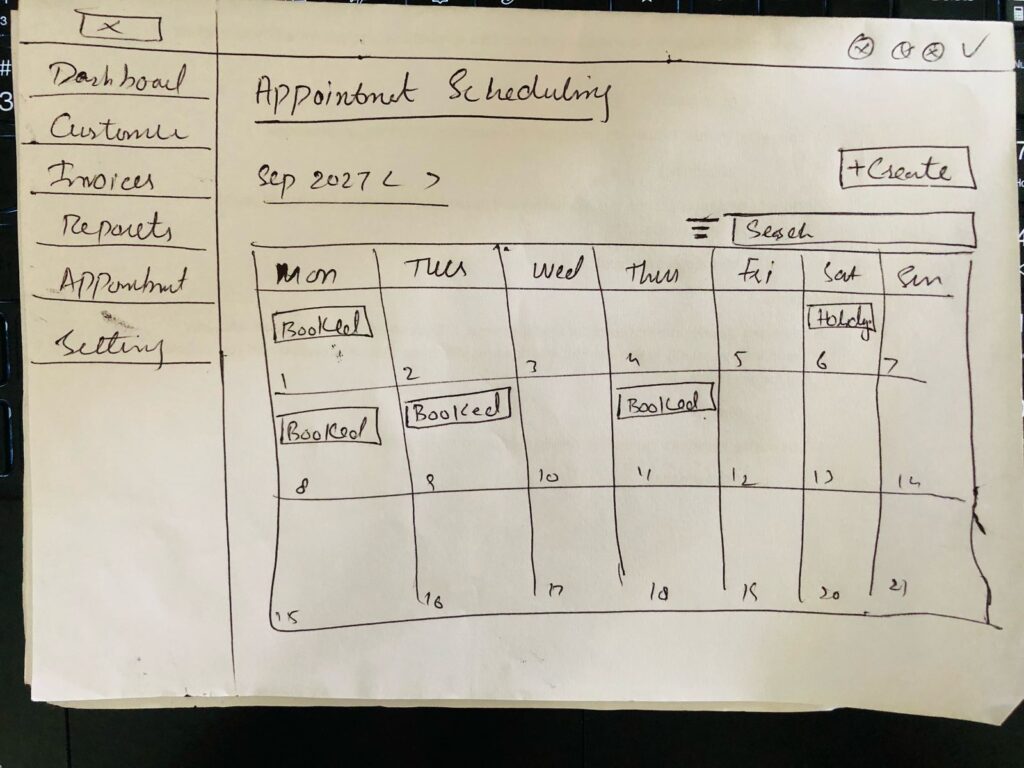
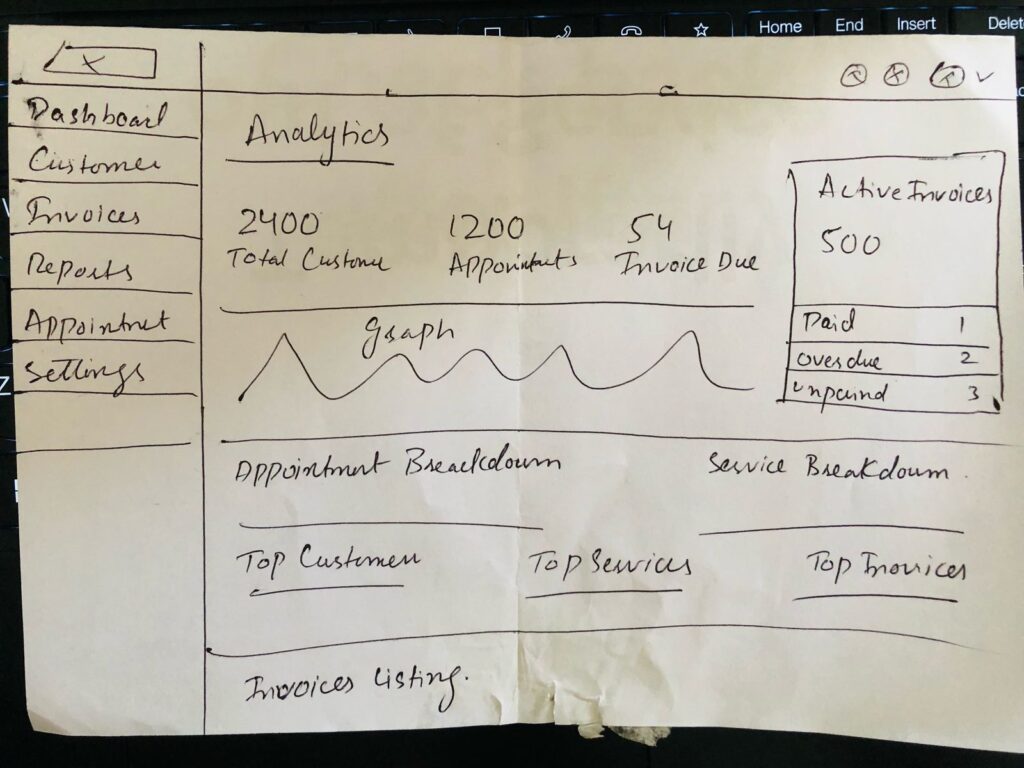
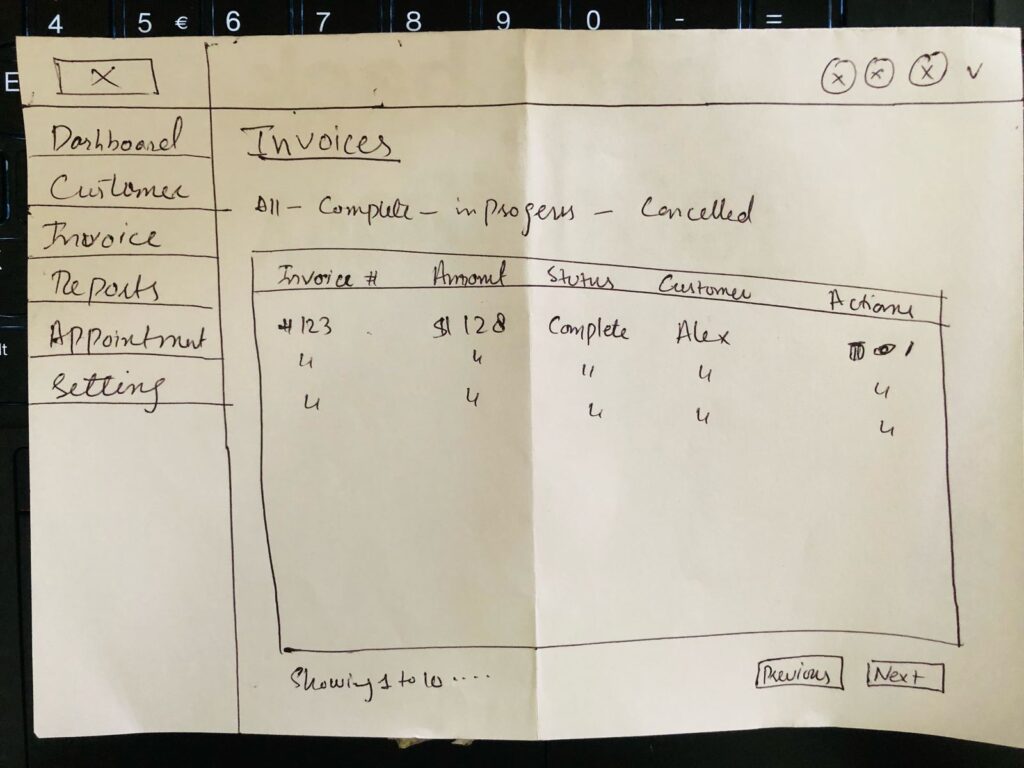
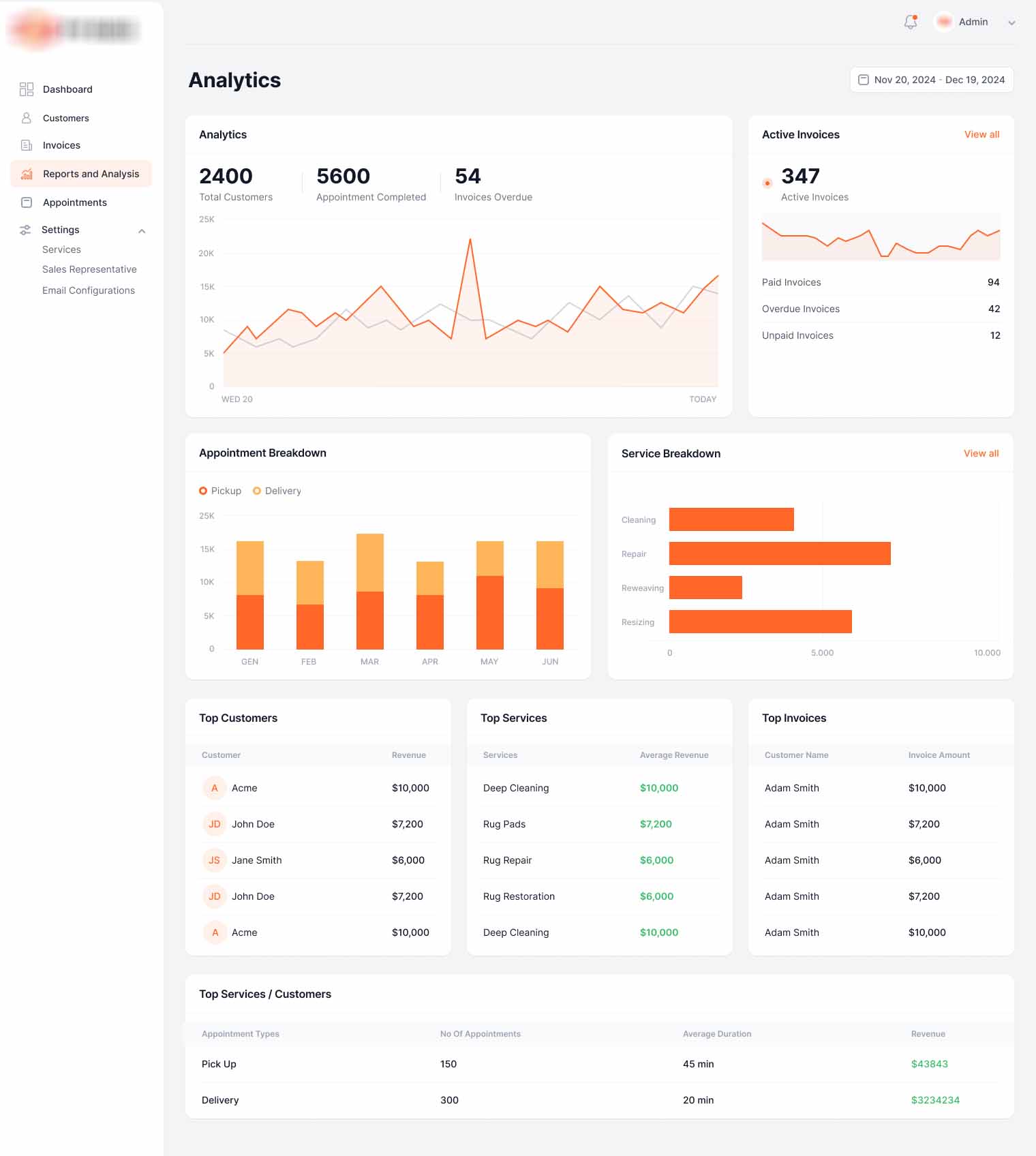
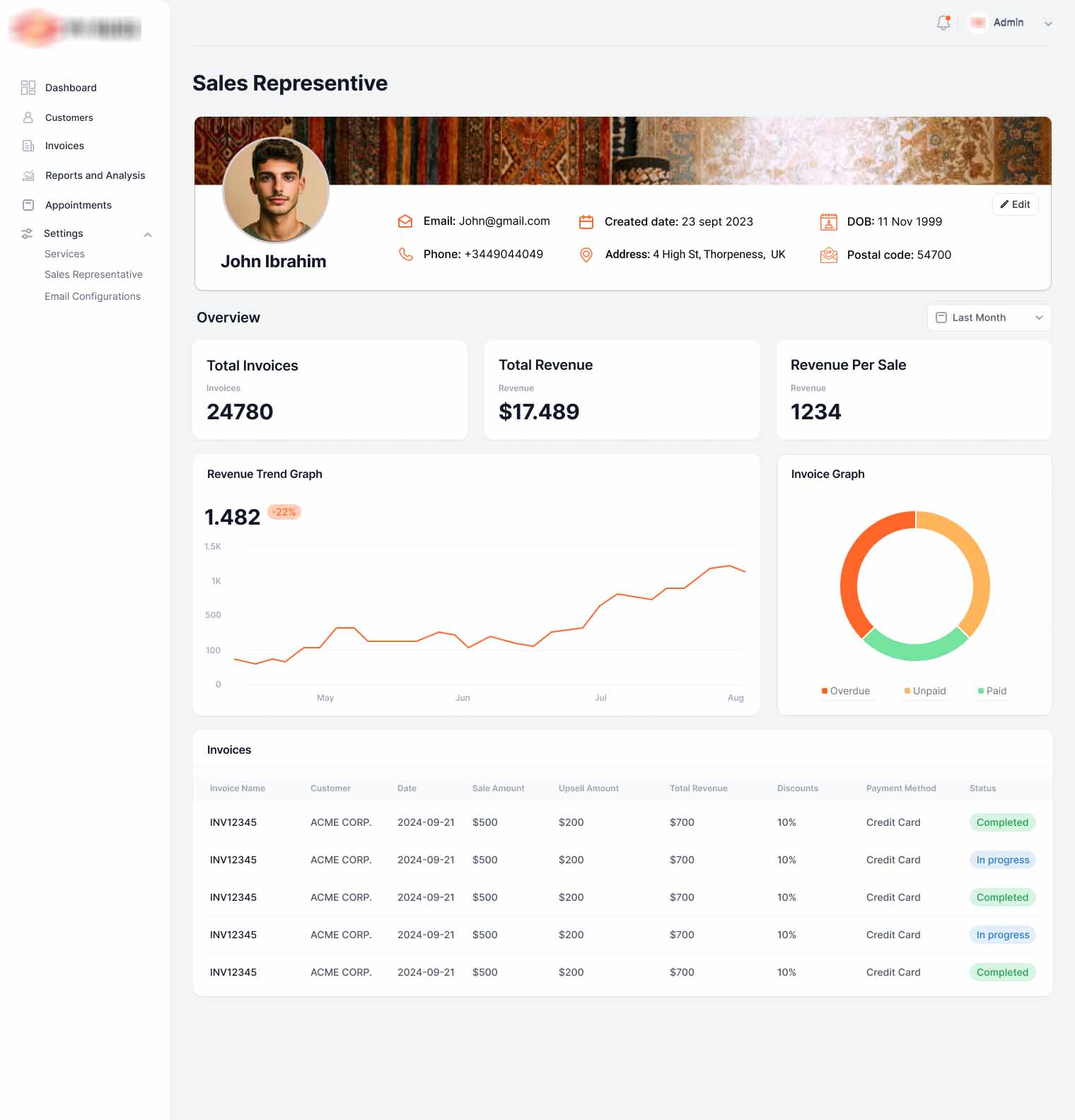
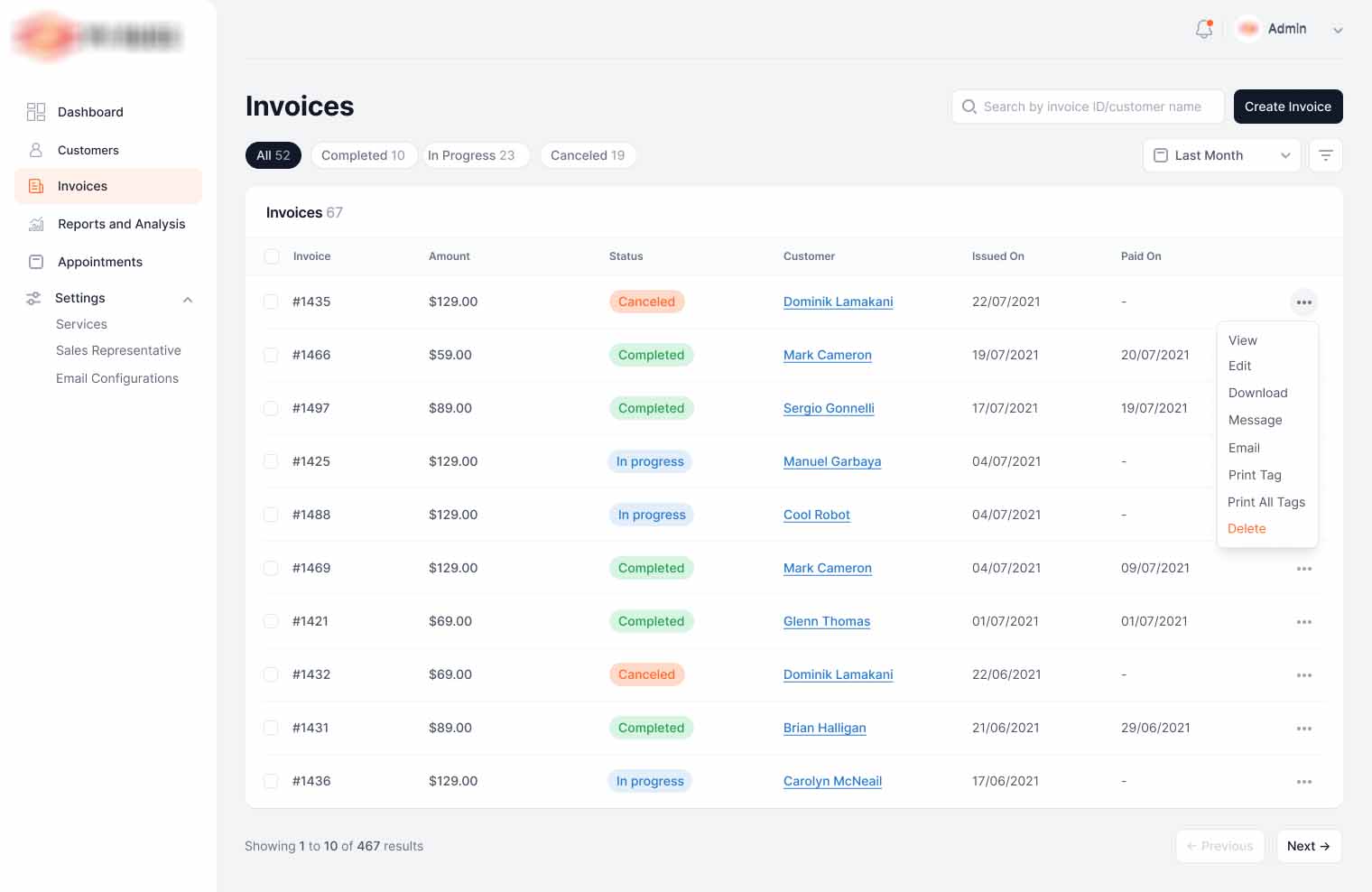
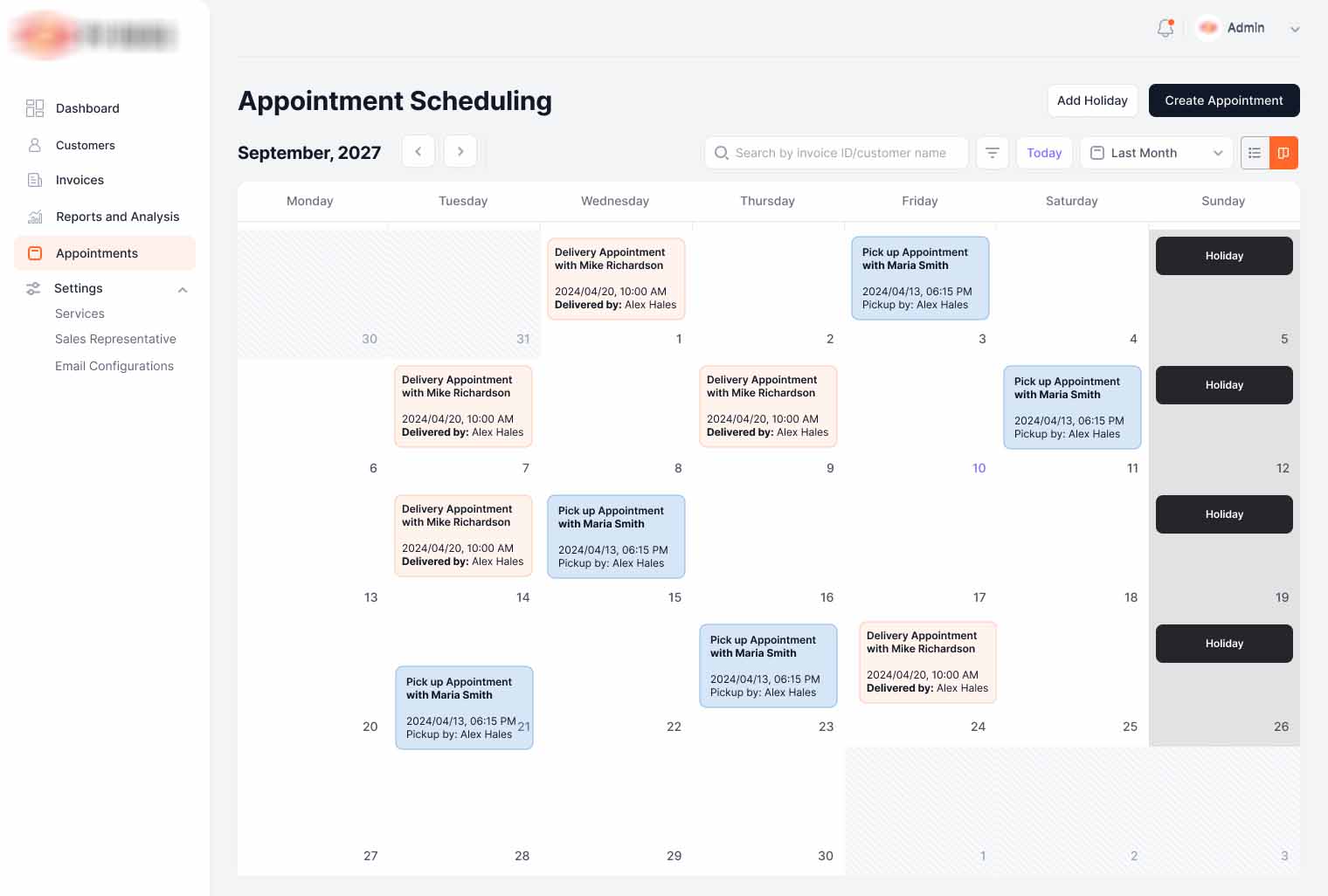
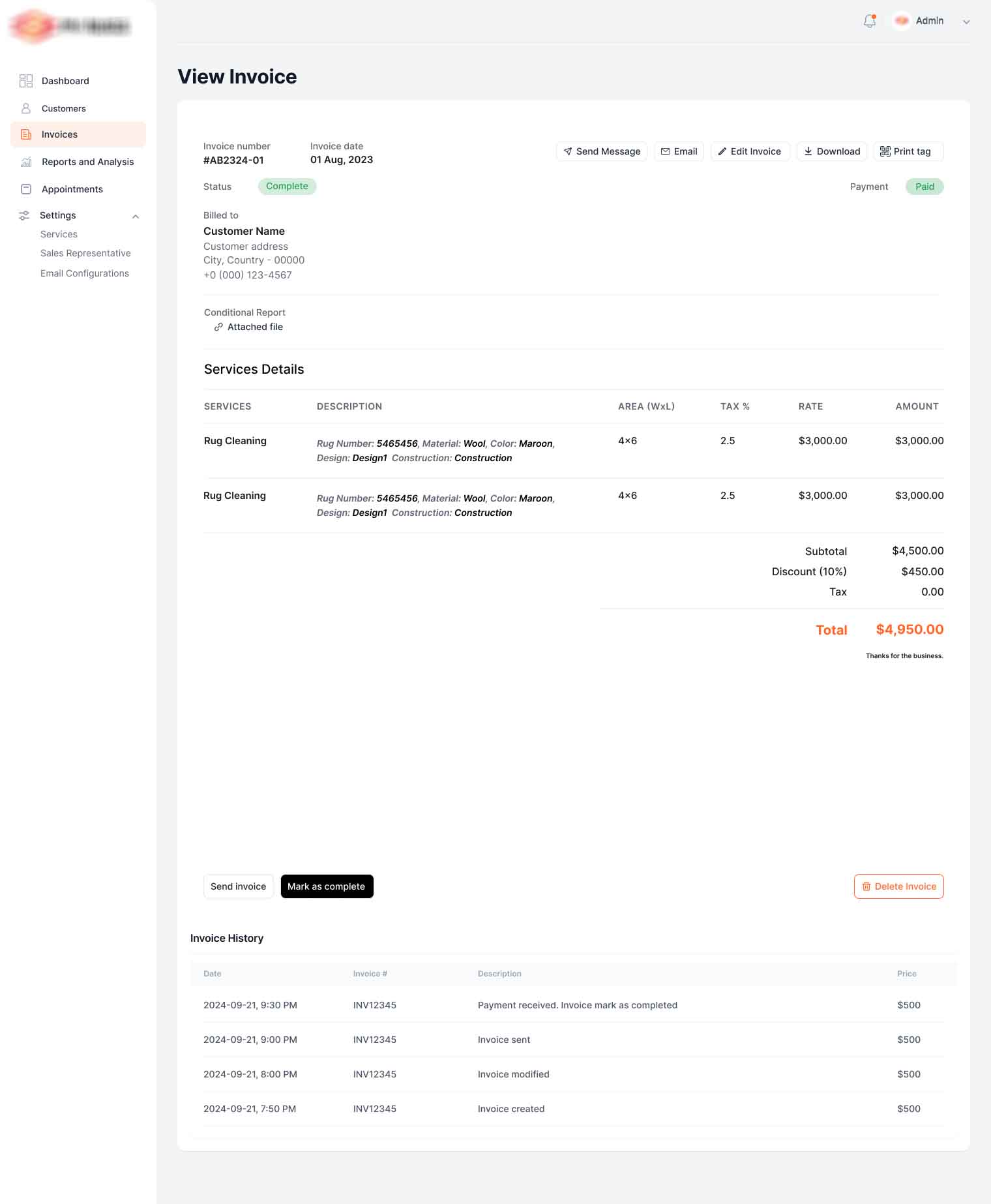
Outcome & Impact
- Streamlined Invoice Management: Automating the invoicing process significantly reduced errors and time spent on manual updates. Admins no longer had to worry about missed payments or confusing invoice statuses.
- Improved Customer Management: Having all customer data in one place allowed admins to provide better service and quicker responses to customer inquiries. Accessing service history and payment status became seamless.
- Efficient Appointment Scheduling: The integrated appointment scheduling system helped eliminate conflicts and confusion, ensuring timely rug pick-ups and deliveries.
- Real-time Reporting: Admins could now track revenue, service performance, and customer engagement with ease. This data-driven approach helped them make more informed decisions about business strategy.
- Better Business Control: With the ability to manage services, sales representatives, and email configurations, admins had full control over business operations and communications, improving efficiency across the board.
Overall, the new system helped the business operate more smoothly, reduced administrative overhead, and led to improved cash flow and customer satisfaction. Admins could now focus on growing the business instead of being bogged down by administrative tasks.
